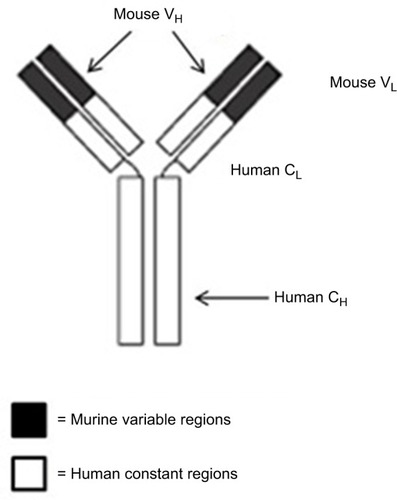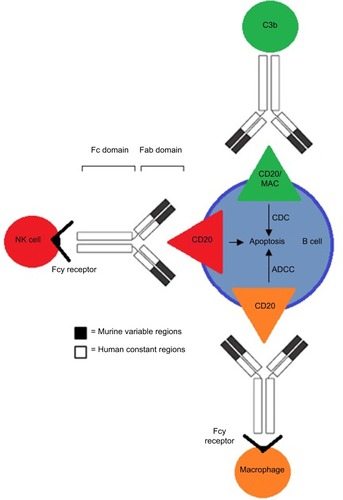Figures & data
Figure 1 Structure of rituximab, a chimeric monoclonal antibody (~30% mouse origin and ~70% human origin).
Abbreviations: VL, variable domain (light chain); VH, variable domain (heavy chain); CL, constant domain (light chain); CH, constant domain (heavy chain).

Figure 2 The various mechanisms of action rituximab uses to kill B cells associated with NHL through binding of the CD20 antigen.
Abbreviations: NHL, non-Hodgkin’s lymphoma; CDC, complement-dependent cytotoxicity; ADCC, antibody-dependent cellular cytotoxicity.

Table 1 Three key clinical trials with rituximab in combination with CHOP for treatment of aggressive B-cell lymphomas
